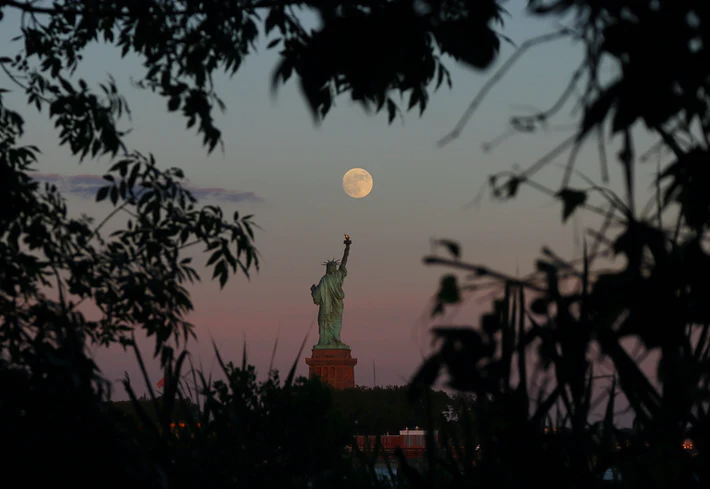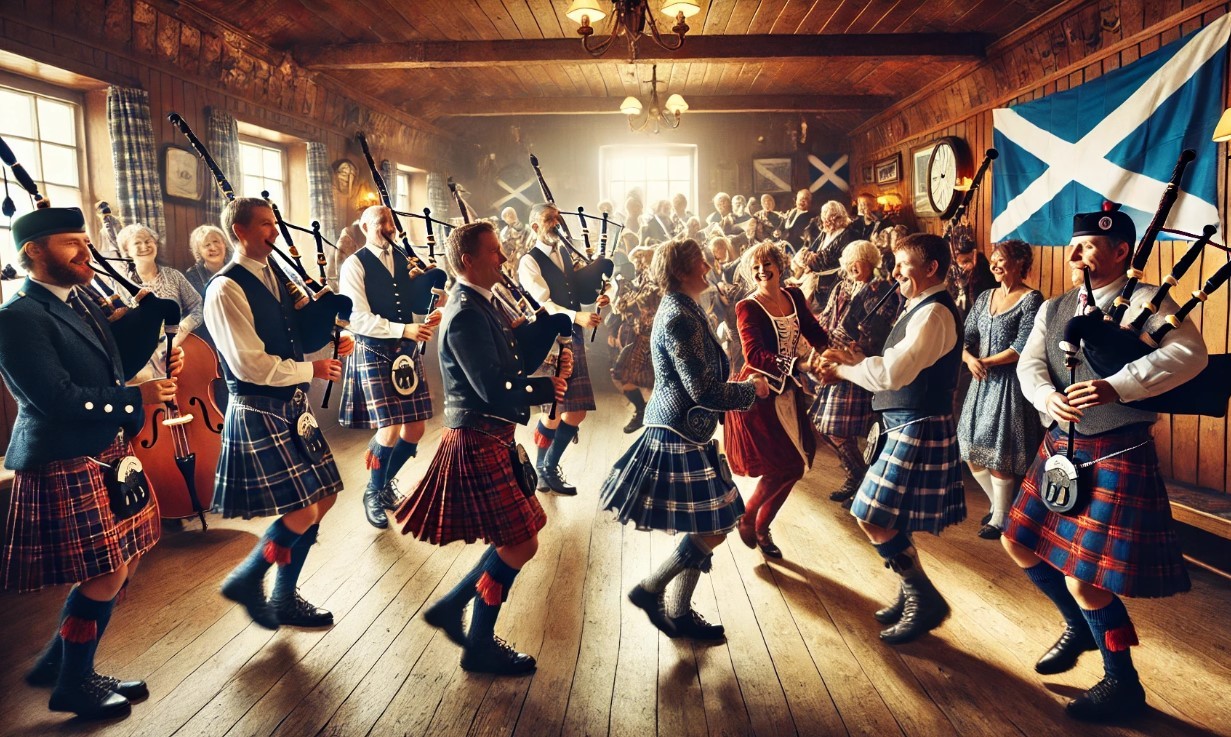What is Full Buck Moon (July 23): Meaning and How To See
 |
| Full Buck Moon. Photo: The Old Farmer's Almanac |
THIS MONTH’S FULL MOON comes with a little bonus.
On July 23-24, the Full Buck Moon will illuminate the summer skies while commemorating buck deer growing out fresh new, velvety antlers. In a rare cosmic encounter, the Full Moon will swing past the planets Jupiter and Saturn in our view of the night sky.
WHEN TO SEE THE FULL MOON IN JULY 2021
July’s full Buck Moon will rise after sunset on Friday, July 23, reaching peak illumination at 10:37 P.M. Eastern Time that night. Look towards the southeast to watch it rise above the horizon.
WHY IS IT CALLED A BUCK MOON?
 |
| Photo: Getty Images |
The full Moon will be shining at its brightest as it positions itself on the opposite side of the Sun from our Earthly view.
July’s Full Moon is also known as the Buck Moon, named so by Native American tribes as it coincides with the time that buck deer start developing new antlers. It is also known as the Hay Moon, since it also happens to be around the hay crop season, and Thunder Moon due to the frequent summer showers at this time.
A JUPITER AND SATURN ALIGNMENT
This month’s Full Moon also comes with an added treat as two popular sky-viewing planets can be seen along its trail.
On the night of the Full Moon, the planets Jupiter and Saturn will appear as though they are following the Moon westward across the dome of the sky.
The Moon crosses the path of all of the planets of the Solar System each month, but this month it happens to pass by Jupiter and Saturn while it is fully illuminated.
Although in real distances, the Moon does not travel any closer to the two planets, it will appear chummy with Jupiter and Saturn from our view from Earth.
HOW TO SEE THE BUCK MOON
In order to view the Full Moon, look towards the east around the time that the Moon rises in the sky. It will move towards the west over the course of the night.
Different Full Moon Names in Northern Hemisphere
 |
| Photo: Daily Express |
For millennia, ancient humans have used different seasons as a guide to track the different full moon phases. Or, you can say for millennia, humans have used the full moon phases to track the changing season. However, seasons are not the only possible way to define different full moon names.
I mean the names given to the various full moon phases are based upon a couple of different sources. Out of all, the most famous and widely acknowledged full moon names come from the tribes of native American culture.
As per the legends, in order to keep track of changing seasons, the Algonquin tribal people used to follow the lunar calendar rather than following the solar calendar.
These full moon names were later adopted by Colonial Americans and European settlers. And, with time, these names were finally integrated with the modern (Georgian calendar) calendar.
In the northern hemisphere, the full moon in July is known as the Buck Moon. WHY? Because during this time of the year, Buck (Male Deer) shed their old antlers and grows new ones every year.
The antlers of Buck signifies their strength and influence for their female mate selection. That’s why during male-to-male competition, bucks use antlers to justify their dominance.
Not to mention, the Bucks’ antlers also display their fertility competitiveness. In other words, one can say that the larger the size of antlers of Male Deer, the larger will be their chance of sexual display during mating season.
Other Cultural Full Moon Names for July 2021 in Northern Hemisphere
Well, if you go somewhere away from your native place, you will see that local indigenous people have their own indigenous full moon names. For example:
• In Indian Culture, the full moon in July is known as Ashadha or Vyasa Purnima. Not to mention, the full moon in Hindi is known as Purnima.
• English Medival people call it a Mead moon.
• Chinese people call the full moon in July a Hungry Ghost Moon.
• Dakotah people call it the Moon of the Middle Summer.
• Cherokee tribe people call it the Ripe Corn Moon.
• Colonial American People call it the Summer Moon.
• Choctaw tribe people call it the Crane Moon, etc.
Different Full Moon Names in Southern Hemisphere
You would be baffled to know that the full moon names used in the southern hemisphere are the same as the northern hemisphere, just the seasonal difference. Wanna know why???
Well, because most of the people living in the southern hemisphere (let’s say Australia or New Zealand) are none other than the European settlers.
In other words, one can say that European settlers, at first, integrated the native American full moon names into their modern Georgian calendar. And, later, many of these full moon names went with them to new places around the world.
Full Moon in July 2021 – Wolf Moon in Southern Hemisphere
In the southern hemisphere, the full moon in July is known as the Wolf Moon or Full Wolf Moon. WHY? Because it has been history said that during this time of the year, native people would hear wolves howling at the moon.
However, as per the Smithsonian Institution, there is no scientific relation between the howling of the wolf and the moon. In fact, it’s a myth that wolves howl at the moon!
Howling may be heard at night, but it is not a behavior directed at the moon. Instead, it is used as a social rally call, a hail to hunt, or as a territorial expression.
Full Moon July 23, 2021 – Relationship Irritants
An aspect pattern linked to the July 2021 full moon creates a lot of activity and makes you want to achieve something and reach your goals. But it also creates irritability and inner tension that can make it very difficult to relax.
The major theme of the July 23 full moon aspect pattern is the irritation caused by trying to balance polarities in your life. This irritation applies mainly to intimate relationships, self-worth, and finances because of the involvement of Venus. Jupiter creates issues involving greed and excess. The major fixed star influence from Altair brings confidence, ambition, and bravado.
So moderation and self-control are the keys to reducing irritability and finding the right balance in your love life and with your finances. Focus your energy on fewer, rather than too many goals. Avoid greed and overestimating your abilities or resources. And try not to let your partners’ irritating habits sabotage a good relationship.
The influence of the July 23 full moon combines with that of the July 9 new moon. That new moon brought positive change, freedom, excitement, and higher self-awareness associated with partnership and compromise. The effects of the July 23 full moon lasts for two weeks up to the August 8 new moon.
The Fixed StarsFull Moon July 2021 is in the Sign of Aquarius. But as the star map below shows, it is actually located between the Constellations of Sagittarius and Capricornus. This discrepancy is due to the precession of the equinoxes. It has moved the Sun Signs almost a whole Sign out of alignment with the Constellations from which they were named over 2000 years ago. |
Full Moon MeaningSun opposite Moon brings your home, family, and intimate relationships into sharper focus for the following two weeks of this moon phase. Opposing forces such as work versus home, or what you need versus what you want, create inner tension and external pressures. This can lead to conflict and crises that drain your energy. The lunar qualities of emotions and instincts reach their peak at a full moon. So use your increased emotional strength and intuition to overcome any relationship challenges. Subconscious awareness allows for an impartial and balanced look at your personal relationships. You will clearly see any relationship dynamics or negative feelings causing disharmony. |
 Pink Supermoon: What is it, When & How to See? Pink Supermoon: What is it, When & How to See? Our pink supermoon will light up this April. Check out our guide below to make sure you are not gonna miss out on spotting it! |
 February Full Moon: 3 Zodiac Signs are affected most, Date&Time February Full Moon: 3 Zodiac Signs are affected most, Date&Time What impacts will the last full moon of the winter season have on zodiac signs? Different zodiac signs will be affectedly under the full moon. ... |
 What is Snowmoon: Name Origin, Date, Time and Interesting Myths What is Snowmoon: Name Origin, Date, Time and Interesting Myths It is predicted that there would be a super full moon called "Snowmoon" on Saturday, February 27 2021. Read the article below for more information ... |


























